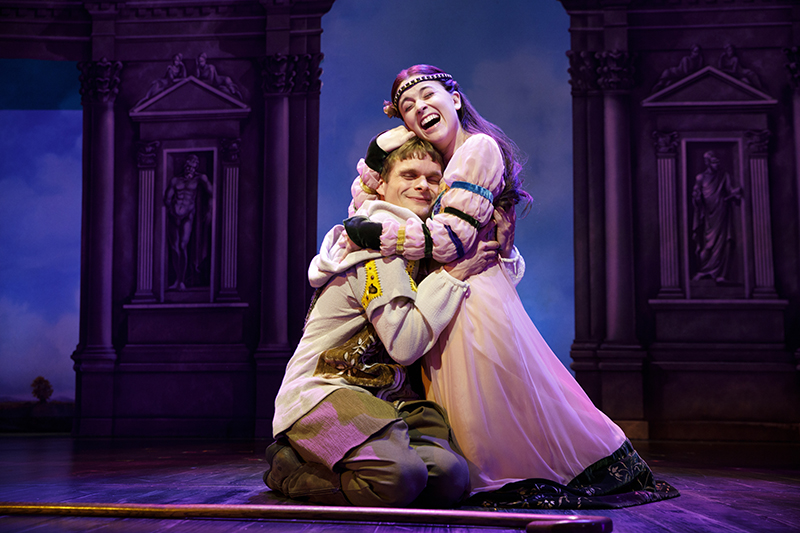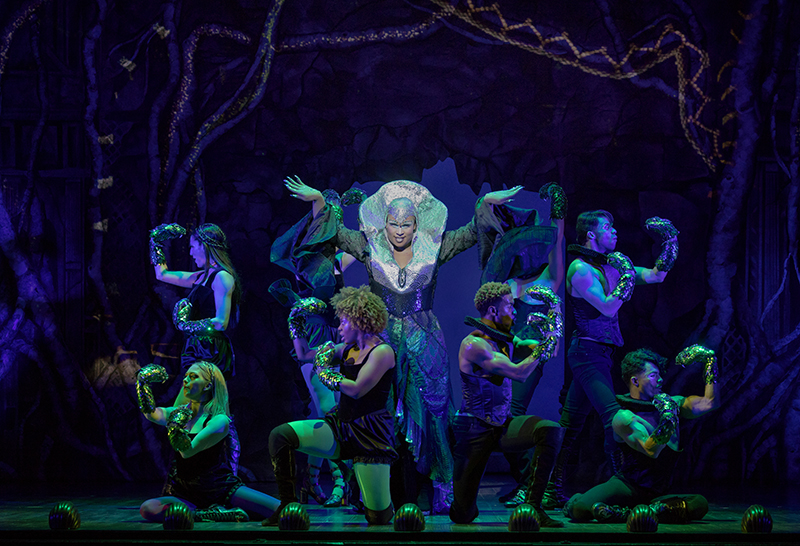
Upon first hearing the term “Go-Go’s jukebox musical,” one might immediately conjure up a show about the life story of the legendary pop-rock quintet set to their hit songs. Instead, their music (and a bit of Belinda Carlisle solo material) is used in the new musical Head Over Heels to propel a plot derived from the 16th century narrative poem Arcadia by Elizabethan poet Sir Philip Sidney, which has inspired, among other works, As You Like It by Shakespeare. The show certainly has a Bard-like flavor to it, including its fun one-liners.

Originally conceived and written by Jeff Whitty (with his book later adapted by James Magruder), the plot revolves around a Greek king who fears a series of terrible oracle prophecies (his daughters will marry ill suitors, his wife will cheat, and his reign will end) that signal the loss of “the beat” in his kingdom. Thus, he diverts his family and other royals on an unnecessary hunt away from their domain in a vain attempt to stay in power and keep the prophecies from coming true. Along the way, budding first romances — including a poor young man cross dressing as an Amazonian warrior to get closer to the king’s daughter — blossom among the throng, all of them connected to a greater theme of accepting all love in our modern LGBQT era.
The serious message is handled in a light and frothy way, which fits with the bubbly and often perky music energetically performed by the show’s 16-person ensemble. The opening song and dance procession in the palace set to the tune of “We Got the Beat” is chipper and comical. Watching the character of Mopsa contemplate romantic longing on a small island, while singing “Vacation,” is both melancholy and hopeful. And “Mad About You,” performed twice, makes for a catchy anthem about love that fits well within the musical format.
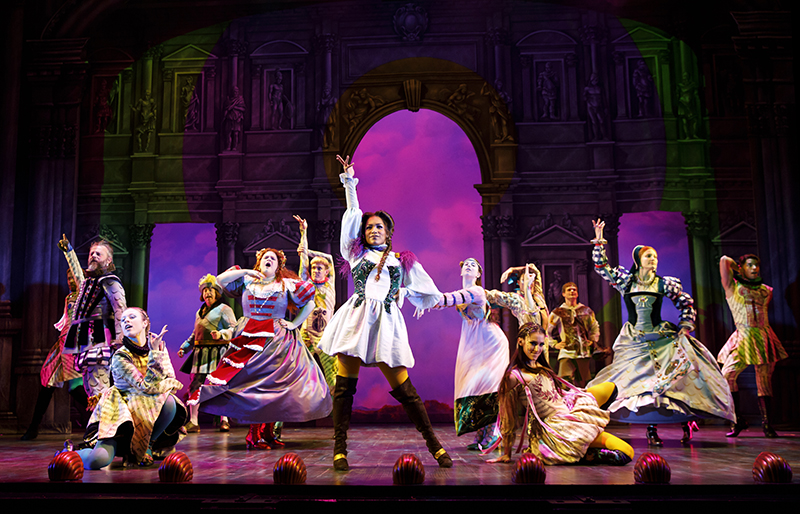
A Pop/Rock Pedigree
Lighting designer Kevin Adams, who has a pop/rock pedigree on Broadway with shows like American Idiot, Hedwig and the Angry Inch, Hair, and the forthcoming The Cher Show, enjoyed working off of Julian Crouch’s interior and exterior set pieces, including a palace and a forest. “I had never really lit a 16th century painted set before, so I thought his design was really cool and a fun contrast to the poppy ‘80s Go-Go’s tunes,” says Adams. “We worked together on getting some electrical set into his scenery, but that’s about the only collaboration we had. We certainly had several meetings about it over the last few years, and we talked about it here and there while we were in tech in London with a new opera Marnie. [Director] Michael [Mayer] and I just thought he was going in a really smart and fun direction.” Adams says that given that Crouch’s colors were rather neutral, he could “push the palette in all kinds of directions.”
Head Over Heels originally had an out-of-town run in San Francisco following an initial three-week stage workshop. Although Adams initially did not know if the show was going to happen, he sketched out a plot that he used once the production moved into the Curran Theatre for its spring 2018 debut. “We had some dry tech time and some time before the actors came when I lit all the sets and started working on the numbers,” he recalls. “We tech’d and previewed for quite a while there, so we had time before New York to assemble all this.”
According to Adams, the structure of the show and the seeds of the songs stayed the same, and just a few transitions and some of the lines were altered. It turns out that the show had a longer, more complicated curtain call in New York, which he says was a big difference. For the Broadway version, the finale became longer and the closing became bigger with different performers involved in a flashy dance sequence.
“I like this [show] because the scenes are all lit with ellipsoidals, and they’re a very warm light,” remarks Adams. “Even the night scenes have a kind of warmth to them. The scenes all look like the painter Maxfield Parrish did them. It’s the sort of heightened realistic painting, and then the songs turn into electric colors like Japanese pop. Those are mostly lit with LED and all those crazy color chips that are in the VL wash units. I go to town with all those chip colors…Every area has four different kinds of ellipsoidal coverage, templates, and scrollers, but there’s also just a huge amount of LED on stage. All the sidelight booms are LED strips, which are so bright. I have eight of those. Above those, there’s another side wash unit for the stage that are Solaris flares. Those are unbelievably bright.”
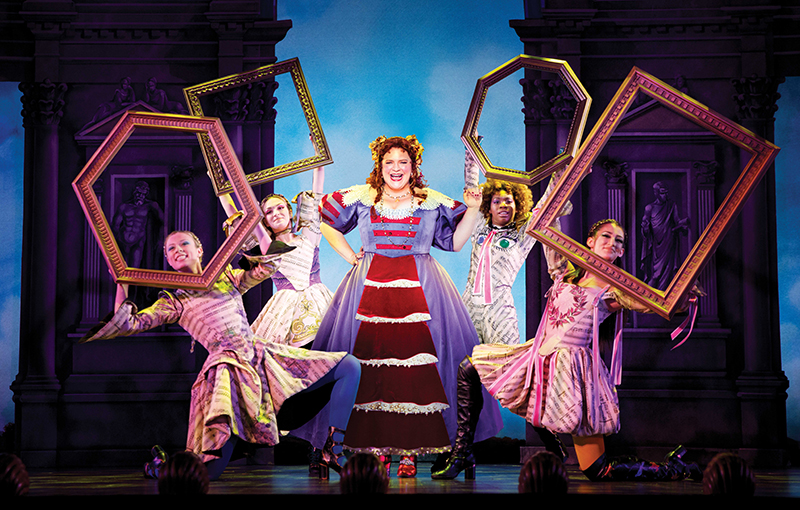
In the downstage portal, little LED strips are somewhat hidden behind the painted palace backdrop. Adams and his team were budgeted to have LEDs on every palace surface, but they chose to keep them downstage. Part of the palace backdrops are translucent, some are opaque, and they are lit from the front with LED strips from the sides, and back lit from the top and bottom with PAR strips, which makes it look like there are lights within the set itself. As Adams notes, “it’s all tungsten behind and LED in the front.” As for the LED strips, “they’re not super-poppy, but they kind of read.” In all the forest portals, over 2,000 little LED dots (specifically, 2116 PixelPro RGB LED Bullets) run through the curvature of the trees. “They make a constellation of little LED points. I used those in SpongeBob and like them very much.”
PRG supplied all this gear. The show is predominately lit with ETC Source Four 4 ERS and PARs, along with support from a couple dozen moving lights each of Vari-Lite VL3500Q Spots and VL3500 Washes. Martin MAC Auras and Rush PAR 2 Zooms light the actors. Other lights include a couple of PRG Best Boy HP fixtures as followspots, Chauvet COLORDash Accent Quads, Solaris Flares, Chroma-Q Color Force 72 Striplights, ETC MultiPAR 8’ 4-Circuit Striplights, Altman LED Worklights and Pixel Range PixelPar 44s. The main console is an ETC ESO Ti with an EOS RPU3.
Director Michael Mayer did not give Adams any direct lighting edict for Head Over Heels. “We’ve done so many shows together that he let’s do my thing,” says Adams. “He knew that I would make the numbers really poppy and bright colored. He kind of guessed what I would do, but he didn’t really say what it should look like.”
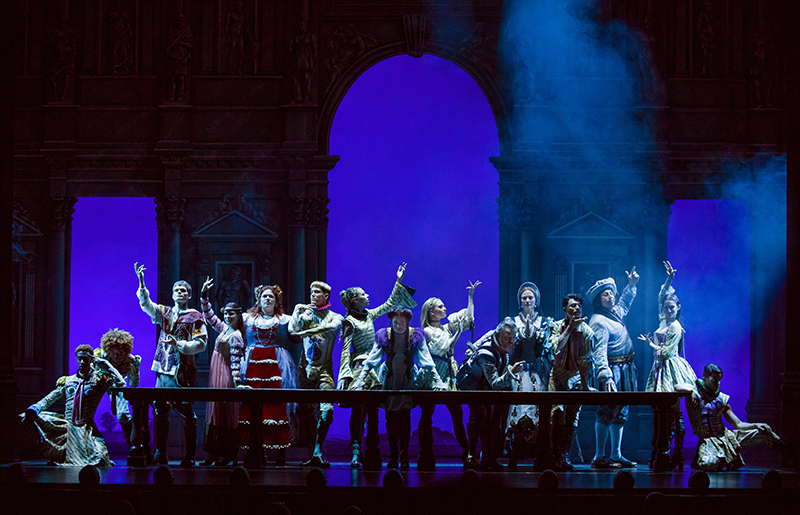
A show like Head Over Heels is refreshing because, unlike many musicals on Broadway that tend to integrate a lot of video or an excess of moving scenery, it keeps things simple and direct. There are plenty of set pieces, for sure, but they do not overwhelm the show. And as Adams has said, he took on the new challenge of lighting painted scenery like the drop borders and forest scenery of this show.
“My partner is a set designer, and I asked him, ‘What do I do?’” recalls Adams. “He said, ‘You want to use a lot of front light.’ So, I hung distinct things on the rail, like two profile movers that had templates for trees. I had a lot of LED wash units upfront that were interesting, just flat in all that scenery, but I liked it. It could look like a 16th century play or a contemporary musical. That was interesting. On SpongeBob, I didn’t have any scrollers. I had all LED units, and that was really hard, so I went back to scrollers with this show and with this big Cher musical I’m doing. I really like the scrollers for front light and side light. They’re brighter, and I can control the colors a little more.”
For one nighttime scene in the forest, lanterns are dropped down from above to help set the mood. Adams estimates around 140 were used in total. Within the lanterns, “we had four or five colors of little dyed light bulbs — clear light bulbs that have been dyed,” he says, adding that the lanterns are of different sizes. “Props found them and hung them.” It’s a nice, unexpected touch that stands out.
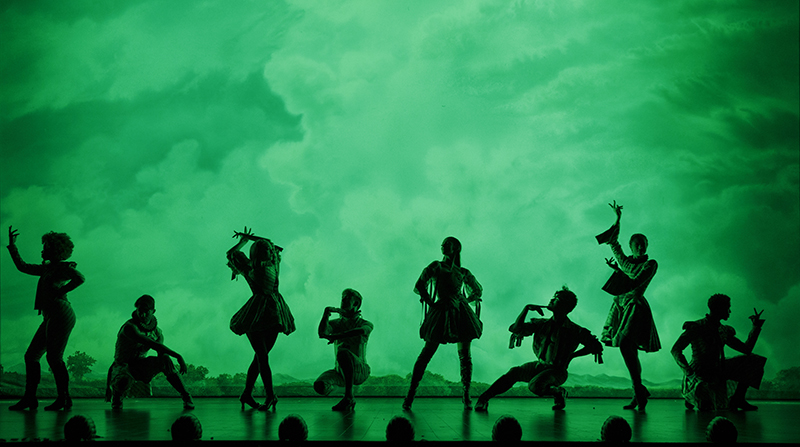
The Band Takes a Bow
As with any artistic medium or theatrical discipline, there is always the risk of repeating one’s self in their work. It is something that a theater veteran like Adams is aware of. “I try not to fall into easy language of doing things,” he remarks. “I try to say like, ‘Now really, why are we doing that? What does that really mean?’ I try not to do the same things that often, but there’s one trick in the show I use a lot. I hang StarStrobes all along the mezzanine rail on the box booms, so they wrap around the audience. I’ve been doing that forever, and I like that with these pop-rock shows.”
Another surprise in the musical comes at the very end during the final number. The scenery flies out, and the five-woman band — conductor/keyboardist Kimberly Grigsby, guitarists Anne Klein and Bess Rogers, bassist Catherine Popper, and drummer Dena Tauriello — is revealed atop a catwalk suspended about 10 feet above the stage. They play there throughout the show since the Hudson Theatre has a small orchestra pit.
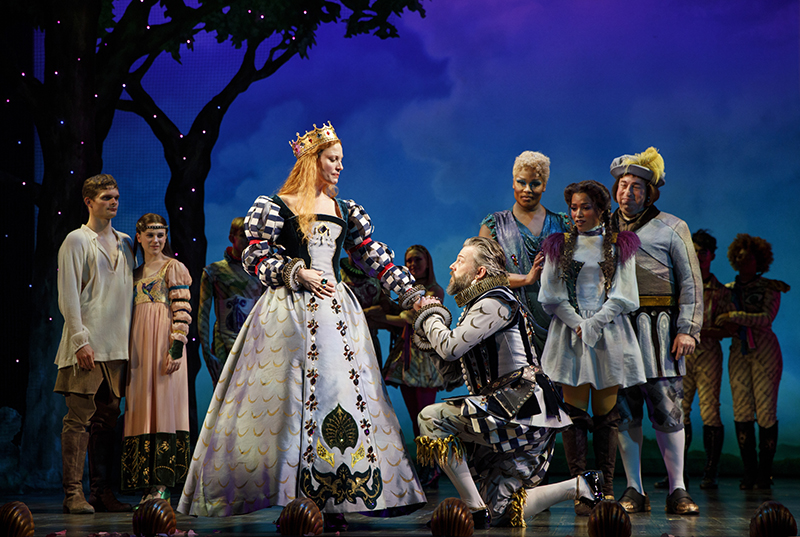
“Originally, we didn’t have any lighting around it [the band set-up] because we couldn’t really afford it in San Francisco,” recalls Adams. “I had done this thing before where I had pipes and just PARs with color on them that point back to the audience. [For Broadway] we cobbled together some stuff we had in-house to make this four-color audience blinder system above the band.”
Adams has certainly kept busy doing musicals over the last few years, and he admits that he would not mind taking on a play again. “I used to do plays all the time,” he says. “Now I just do musicals.” And is that genre more demanding overall than straight plays? “Oh, they are. They do build character, yes,” he adds with a laugh. “They’re a lot more work.”
Not that he is complaining. He says he worked with “a terrific group of people” on Head Over Heels, and he certainly has a connection to the Go-Go’s that hearkens back to his younger days. “I love those songs,” declares Adams. “I bought those albums when I was a teenager. I like the songs a lot. I think the show looks really nice.”
